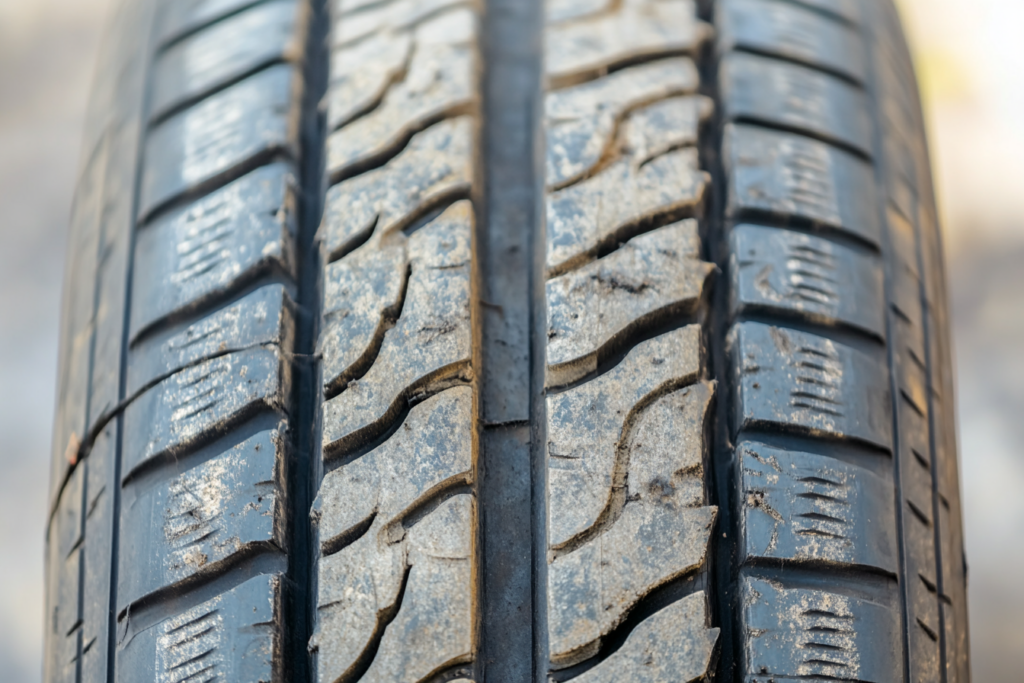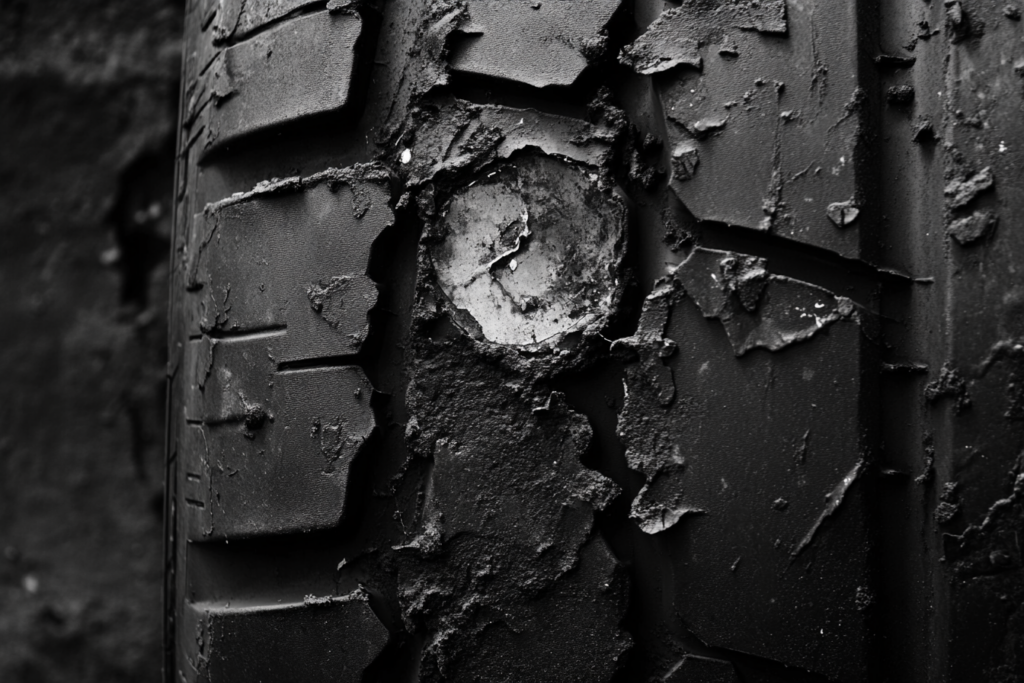Your tires are literally where the rubber meets the road, and knowing when they’re crying out for attention could mean the difference between a safe journey and a roadside emergency. While many drivers focus on engine maintenance and oil changes, those four rubber companions often send crucial signals that shouldn’t be ignored. From mysterious bulges to hidden wear indicators, here’s what you need to watch for and why immediate action matters.
Wear bars showing through your tire tread

Built into every tire are small raised bars between the tread patterns – these are your tire’s built-in warning system. When your tread wears down to the same level as these bars, it’s time for immediate replacement. These wear indicators become visible when your tread depth reaches 2/32 of an inch, the legal minimum in most states.
Don’t wait until you can clearly see these bars across your entire tire. For accurate measurement, consider picking up a digital tread depth gauge for precise readings. Remember to check multiple points around each tire, as uneven wear could indicate additional problems with your vehicle’s alignment or suspension.
Sidewall cracks and dry rot require immediate attention
Sun exposure and time can cause your tires to develop small cracks in the rubber – a condition known as dry rot. These cracks might look minor, but they significantly weaken your tire’s structure. Even if your tread depth is perfect, visible cracking means it’s time for replacement.
Look for these cracks during your regular tire inspection, paying special attention to the sidewalls. A quality tire protectant can help prevent premature aging and cracking, especially if you park outside frequently.
Bulges or blisters signal internal damage

A bulge or blister in your tire’s sidewall is like an aneurysm waiting to burst. These deformities occur when the internal structure of the tire has been compromised, often from hitting potholes or curbs. What might seem like a small bubble could lead to a catastrophic blowout at highway speeds.
No repair can fix a bulging tire – replacement is the only safe option. While checking for bulges, run your hand along the tire’s surface (when the tire is cool). Sometimes you can feel irregularities before they become visible to the eye.
Uneven wear patterns across the tread surface
If your tire shows more wear on one side than the other, or if the center is wearing differently than the edges, your vehicle is trying to tell you something. These patterns often indicate alignment issues, improper inflation, or the need for rotation.
Keep a reliable pressure gauge in your glove box and check your tires monthly. The correct pressure isn’t what’s printed on the tire itself – check the sticker inside your driver’s door jamb for the right numbers.
Excessive vibration through the steering wheel

When your steering wheel starts buzzing like a smartphone, your tires might be sending an SOS. While some road feedback is normal, a sudden increase in vibration could indicate separated tire belts, severe uneven wear, or tire damage you can’t see.
Think about the last time you had your tires balanced. Most shops recommend this service every 5,000-7,500 miles, along with rotation. Regular maintenance costs far less than replacing a tire that’s been damaged by prolonged vibration issues.
Your tires are engineered with multiple ways to communicate their condition – from built-in wear bars to vibration patterns. Taking immediate action when you spot these warning signs isn’t just about avoiding an inconvenient flat tire; it’s about maintaining control of your vehicle when you need it most. Remember, a quality set of tires costs far less than the potential consequences of driving on damaged ones.
